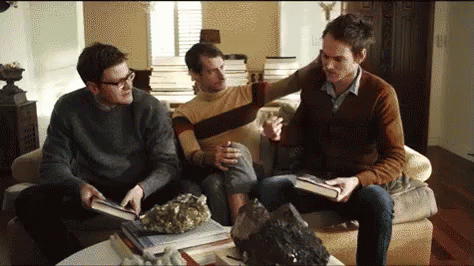I watched a couple dozen short films these last couple of weeks to prepare for this project and noticed a really prominent trend in the short film medium: the 4:3 aspect ratio.
I did a little research on why exactly this antiquated aspect ratio is making a comeback and I discovered this:
Overuse of 2.35: When wider aspect ratios first became popular, they were extremely hard to accomplish because they require special lenses called anamorphic lenses. These lenses are a lot easier to come by nowadays and filmmakers have also been cheating their way into getting a 2.35 aspect ratio. There are now anamorphic filters that you can put on a non-anamorphic lens and some filmmakers just crop the top and bottom portions of the screen to fake the "cinematic look" associated wth the 2.35. This overuse has caused the aspect ratio to lose its power because it is no longer reserved for high-budget films.
Era of Nostalgia: A blogger from Medium.com, Ryan Hooper, argues that we live in an era where the concept of time does not exist. Because we now live through our devices, we lack a sense of a physical world and the only way we can feel any sense of comfort and safety is through physicality. This comes in many forms like adding grain to a digital film and using the 4:3 ratio. The academy ratio calls back to a time when movies were shot on actual film; when people and things existed in a physical world. It brings back nostalgia; a temporary feeling of joy and sadness triggered by memory. Our generation uses nostalgia as a way to cope with no longer feeling present or have a meaningful existence.
 |
Still from "Brotherhood" an Oscar-nominated
short film shot on 16mm film in a 4:3 ratio |
Intimacy: According to Noam Kroll, a filmmaker and blogger, he noticed that the 4:3 is the best way to frame a face close up. This makes perfect sense since our faces are quite circular. In fact, I would take it a step further and say it is the best way to frame people in general because it is the "tallest" aspect ratio out there, so the subject is never dominated by the landscape. This makes it a super effective tool for communicating emotions.
 |
| A wide aspect ratio cuts off a lot of detail on subject's face. |
 |
| Face fits better into the frame in 1.33 |
I think I am going to make the film in a 4:3 ratio, unless the story we come up with works better with 2.35 or 16:9 (I hate 16:9), which is unlikely. I am actually really open to the idea of
not sticking with any specific aspect ratio and trying something radical like changing the aspect ratio between scenes or while cutting between shots.
After doing this research I'm super interested in perhaps writing a film that touches on the idea of nostalgia and how that is a reflection of how our generation longs for connection to the real world and for a sense of intimacy.
Hooper, Ryan. “Constant Nostalgia: Celebrating the Physical in the Digital Age.” Medium, Medium, 10 Dec. 2019, medium.com/@ryhooper/constant-nostalgia-celebrating-the-physical-in-the-digital-age-fc38415df5ab.
Kroll, Noam KrollNoam. “Why The Old-School 4:3 Aspect Ratio Is Coming Back With A Vengeance Right Now.” Noam Kroll, 17 Sept. 2019, noamkroll.com/why-the-old-school-43-aspect-ratio-is-coming-back-with-a-vengeance-right-now/.











